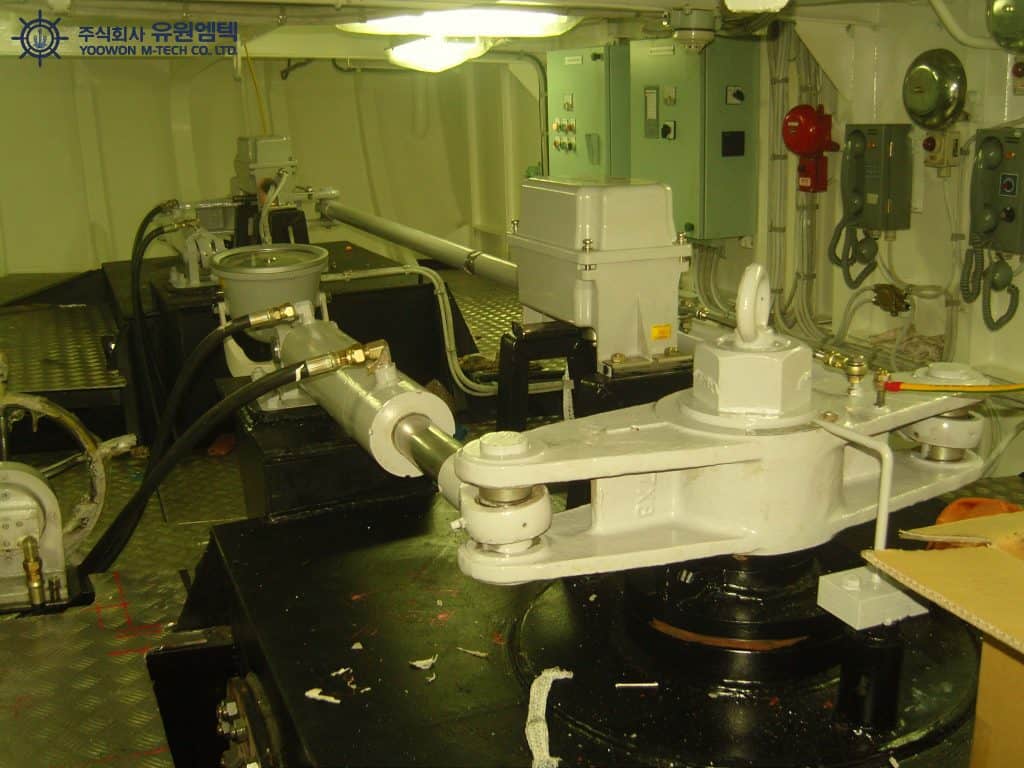We are all familiar with the use of a rudder, which helps in turning a ship as and when required. Rudders are the principal system for the entire motion and control of the ships. But we mustn’t forget that the entire rudder action is dependent on another pivotal system called the Steering Gear.
Steering Gear integrated with the rudder system defines the complete ‘turning mechanism’ mandatory for each and every ship irrespective of size, type and operation.
Steering gear system has been an indispensable part of the ship’s machinery since the advent of the very early ships, which were operated by hand.

Figure 1: Hand operated steering wheel at helm for olden ships
Steering Gear System In Ship
The efficiency of performance of steering gear depends on some main aspects. These basic requirements to be invariably met by all steering gears are guided by rules set by classification societies. They can be briefly outlined as:
· As per standard requirements, the steering gear should be capable of steering the ship from 35 degrees port to 35 degrees starboard and vice-versa with the vessel plying forwards at a steady head-on speed for maximum continuous rated shaft rpm. and summer load waterline within a time frame of maximum 28 seconds
· With one of the power units inoperative, the rudder shall be capable of turning 15 degrees port to 15 degrees starboard (and vice-versa) within a time frame of 1 minute with the vessel moving at half its rated maximum speed or 7 knots (whichever is greater) at summer load line
· The major power units and the control systems are to be duplicated so that if one of them fails, the other can easily substitute for them as standby
· Emergency Power Supply: The steering gear system is to be provided with additional power unit (hydraulic pump etc.) connected to the emergency power supply from Emergency Generator, which shall be capable of turning the rudder from 15 degrees from one side to other side within 60 seconds with the vessel moving at a maximum service speed or 7 knots, whichever is greater


Comments are closed